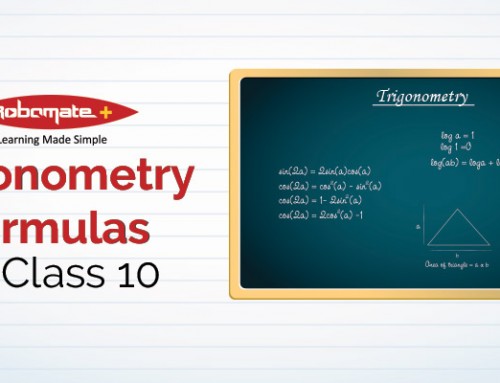1. In the figure, PQ is a chord of a circle and PT is the tangent at P such that ∠QPT = 60°. Then find the measure of ∠PRQ.

Solution.
Since OP is perpendicular to PT.
∠OPT = 90°
∠OPQ = 90°- ∠QPT
∠OPQ = 90 – 60 = 30°.
In ΔOPQ, OP= OQ = r ( Radius of the circle )
∠OPQ= ∠OQP = 30.
And,
∠POQ = 180 – ∠OPQ- ∠OQP
= 180° – 30° – 30° = 120°
Also, reflex ∠POQ = 360° – 120° = 240°
Now, ∠PRQ = reflex ∠POQ
= 12x 240° = 120°
2. If the angle between two radii of a circle is 130°, then find the degree measure of the angle between the tangents at the ends of the radii.
Solution.
It is already known that angle between two radii and the angle between the tangents at the ends of the radii are supplementary.
Hence, Angle between the tangents at the ends of the radii is 180° – 130° , i.e., 50°.
3. In the figure, if ∠AOB = 125°, then find the degree measure of ∠
Solution.
It is already known that the opposite sides of a quadrilateral circumscribing a circle subtend supplementary angles at the centre of the circle.

∠AOB + ∠COD = 180°.
125° + ∠COD = 180°
∠COD = 180° – 125° = 55°.
4. In the figure, AB is a chord of the circle and AOC is its diameter such that ∠ACB = 50°. If AT is the tangent to the circle at the point A, then find the measure of ∠BAT.

Solution.
∠BAT= 50°.
5. At one end A of a diameter AB of a circle of radius 5cm, tangent XAY is drawn to the circle. Find the length of the chord CD parallel to XY and at a distance 8cm from A.
Solution.

Since XAY is a tangent through one end A of a diameter of a circle,
AB is perpendicular to XY
And also, CD is parallel to XAY ⇒ AB is perpendicular to CD
Since OM is perpendicular from centre O to the chord CD.
⤑ OM is perpendicular bisector of chord CD.
That is., CM = MD = 12CD.
Now, AM =8cm (given)
⇒ OM = AM – AO = 8-5 = 3cm.
In OMC, we obtain
CM = CM=OC2−OM2−−−−−−−−−−√
= 52−32−−−−−−√
= 16−−√
= 4 cm.
Hence, CD = 2cm = 2 x 4 = 8 cm.
6. In the given figure, AT is a tangent to the circle with centre O such that OT = 4 cm and ∠OTA = 30°. Find the length of the segment AT.
Solution.

In tight triangle ∆OTA, ∠OTA = 30°.
OAOT=sin30∘
OA=12OT=12×4=2cm
Again, AT=OT2−OA2−−−−−−−−−−√
AT = 42−22−−−−−−√
=16−4−−−−−√ 12−−√
= 23–√cm.
7. In the figure, if O is the centre of a circle, PQ is a chord and the tangent PR at P makes an angle of 50° with PQ, find the measure of ∠POQ.

Solution.
Since OP is perpendicular to PR
∠OPR = 90°
∠OPQ + ∠QPR = 90°
∠OPQ + 50° = 90°
→ ∠OPQ = ∠OQP = 40°
Again,
∠POQ + ∠OPQ + ∠OQP = 180°
→ ∠POQ + 40° + 40° = 180°
→ ∠POQ = 180° – 40° – 40°
= 100°
8. In the figure, if PA and PB are tangents to the circle with centre O such that ∠APB = 50°, find the degree measure of ∠OAB.

Solution.
Since OA is perpendicular to PA and also, OB is perpendicular to PB
∠APB + ∠AOB = 180°
50°+ ∠AOB = 180°
∠AOB = 180° – 50° = 130°
In △AOB,
OA = OB = radii of same circle
∠OAB = ∠OBA = x ( say )
Again, ∠OAB + ∠OBA + ∠AOB = 180°
x +x + 130° = 180°
2x = 180° – 130° = 50°
X = 25°
Hence, ∠OAB =25°
9. In the figure, if PQR is the tangent to a circle at Q whose centre is O, AB is a chord parallel to PR and ∠BQR = 70°, find the measure of ∠AQB.

Solution.
Since AB is parallel to PQR
∠B =∠BQR
→ ∠B =70°
Also, ∠A = ∠BQR [∠s in the corresponding alternate segments are equal ]
→ ∠A = 70°
Now, in △ABQ, we have
∠A + ∠B + ∠AQB = 180°
70° + 70° + ∠AQB = 180°
∠AQB=180° – 70° – 70°
=40°
Hence, ∠AQB = 40°
10. In the figure, DE and DF are tangents from an external point D to a circle with centre A. If DE=5cm and DE is perpendicular DF, find the radius of the circle.

Solution.
Join AE and AF → AE is perpendicular to DE and AF is perpendicular to DF.
AEDF is a square of side 5cm [DE = 5cm(given)]
Hence, radius of the circle is 5 cm.
11. If two tangents inclined at an angle of 60° are drawn to a circle of radius 3cm, find the length of each tangent.
Solution.
.
Here, let PA and PB be two tangents to a circle with centre O.
OA is perpendicular to AP.
Since OP bisects ∠APB
∠OPA = 30°
Now, in △OAP, we have
APOA=cot30∘
→ AP3=3–√
→ AP=33–√cm
12. From a point P which is at a distance of 13cm from the centre O of a circle of radius 5cm, a pair of tangents PQ and PR to the circle are drawn. Find the area of the quadrilateral PQOR.
Solution.

In △OPQ, we have
OQ perpendicular to PQ
OP2=PQ2+OQ2 132=PQ2+52
PQ2=169–25 = 144
PQ = 12cm
Now, (△OPQ) = x PQxOQ
= x12x5 = 30cm2
Thus, (quad, PQOR) = 2 x ar(△OPQ)
= 2×30 cm2
= 60cm2












